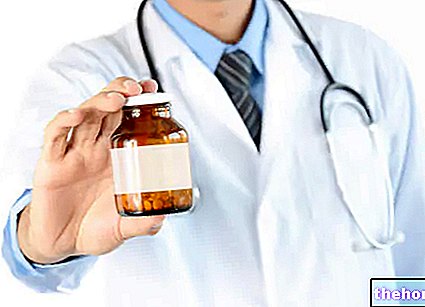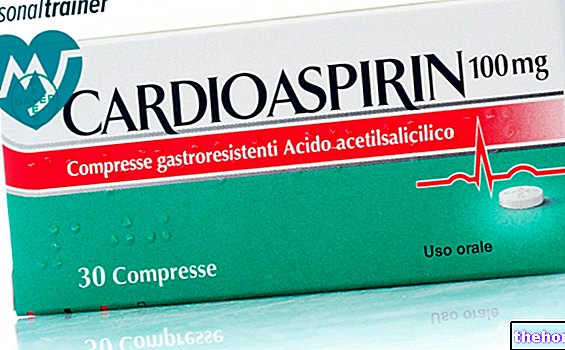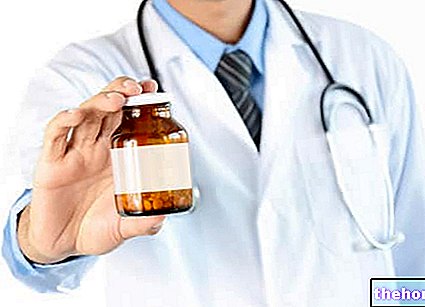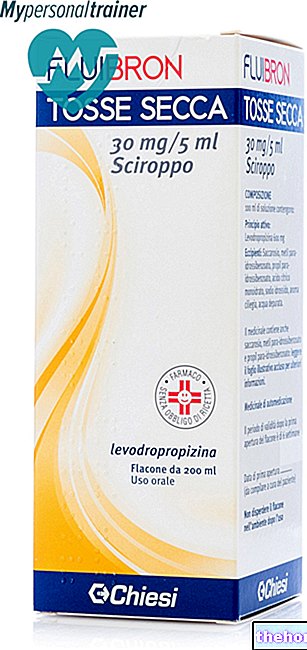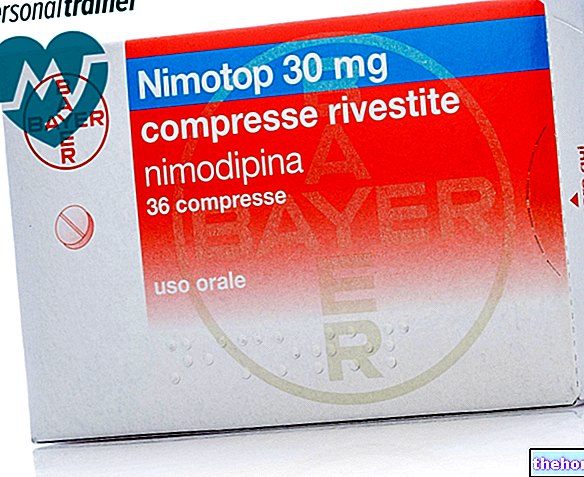Active ingredients: Finasteride
Finasteride Actavis 5 mg film-coated tablets
Why is Finasteride used - Generic Drug? What is it for?
Finasteride Actavis contains the active substance finasteride which belongs to a group of medicines called 5α-reductase inhibitors. They work by reducing the size of the prostate gland in men
Finasteride Actavis is used for the treatment and control of benign (non-cancerous) enlargement of the prostate.
Contraindications When Finasteride - Generic Drug should not be used
Do not take Finasteride Actavis
- if you are allergic to finasteride or any of the other ingredients of this medicine (listed in section 6)
- if you are a woman or a child (see also "Pregnancy, breastfeeding and fertility" in this section)
Precautions for use What you need to know before taking Finasteride - Generic Drug
- if you have impaired liver function;
- if you have difficulty in completely emptying your bladder or a severe reduction in urinary flow, your doctor should examine you carefully before starting treatment with Finasteride Actavis to rule out other urinary tract obstructions;
- If you notice any changes in breast tissue such as lumps, pain, breast tissue enlargement or nipple discharge, these may be signs of a serious condition such as breast cancer. Tell your doctor immediately if you notice any of these changes.
If your sexual partner is or suspected of being pregnant, you must avoid exposing her to your sperm which may contain a small amount of the drug (see also "Pregnancy, breastfeeding and fertility" in this section).
If you need to have blood tests called "PSA", be sure to tell your doctor or nurse before taking the test as finasteride can alter the test results.
Interactions Which drugs or foods can modify the effect of Finasteride - Generic Drug
Finasteride Actavis tablets can usually be taken with other medicines. Ask your doctor for advice before taking other medicines at the same time.
Tell your doctor or pharmacist if you are taking, have recently taken or might take any other medicines.
Finasteride Actavis with food and drink
Finasteride Actavis can be taken with or without food.
Warnings It is important to know that:
Pregnancy, breastfeeding and fertility
Finasteride Actavis is aimed at men only. If your sexual partner is or suspects she is pregnant, you must avoid exposing her to his sperm which may contain a small amount of the drug.
Women who are pregnant or planning to become pregnant should not come into contact with broken or crushed tablets of Finasteride Actavis.
If finasteride is absorbed through the skin or taken orally by a pregnant woman of a male fetus, the baby may be born with a malformation of the genital organs. The tablets are film-coated to prevent contact with finasteride, as long as the tablets are not broken or crushed.
Driving and using machines
There is no evidence to suggest that Finasteride Actavis alters the ability to drive or use machines.
Finasteride Actavis contains lactose.
If you have been told by your doctor that you have "intolerance to some sugars, contact your doctor before taking this medicinal product.
Dose, Method and Time of Administration How to use Finasteride - Generic Drug: Posology
Take this medicine exactly as your doctor or pharmacist has told you. If in doubt, consult your doctor or pharmacist.
The recommended dosage is 1 tablet per day.
The tablet should be swallowed whole and should not be broken or crushed. It can be taken with or without food.
Overdose What to do if you have taken an overdose of Finasteride - Generic Drug
If you take more Finasteride Actavis than you should
Contact a doctor, nearest emergency room or poison control center immediately for advice.
If you forget to take Finasteride Actavis
Do not take a double dose to make up for a forgotten tablet. Take the next one as planned for your treatment.
If you stop taking Finasteride Actavis
Although improvement is often noticed after a short time, treatment may need to be continued for at least 6 months. Do not change the dose or stop treatment without first consulting your doctor.
If you have any further questions on the use of this medicine, ask your doctor or pharmacist.
Side Effects What are the side effects of Finasteride - Generic Drug
Like all medicines, this medicine can cause side effects, although not everybody gets them.
If you develop any of the following symptoms (angioedema) stop taking Finasteride Actavis immediately and contact your doctor: swelling of the face, tongue or throat, difficulty in swallowing, hives and breathing difficulties.
Common (affects 1 to 10 out of 100 patients): inability to get an "erection, decreased sex drive, decreased ejaculation volume
Uncommon (affects 1 to 10 out of 1000 patients): Breast tenderness, rash, breast enlargement, difficulty in ejaculation
Not known (frequency cannot be estimated from the available data): Depression, pain in the testicles, inability to get an erection that continues after stopping treatment with Finasteride Actavis, decreased sexual desire that continues after stopping treatment, male infertility and / or poor sperm quality, itching, hives, irregular, strong or rapid heartbeat, increased liver enzyme levels.
Report to your doctor immediately any changes in breast tissue such as lumps, pain, breast tissue enlargement or nipple discharge which may be signs of a serious condition such as breast cancer.
Reporting of side effects
If you get any side effects, talk to your doctor or pharmacist. This includes any possible side effects not listed in this leaflet. You can also report side effects directly via the national reporting system at https://www.aifa.gov.it/content/segnalazioni-reazioni-avverse
By reporting side effects you can help provide more information on the safety of this medicine.
Expiry and Retention
Keep this medicine out of the sight and reach of children.
Do not use this medicine after the expiry date which is stated on the blister and carton after "EXP": The expiry date refers to the last day of the month.
This medicine does not require any special storage conditions.
Do not throw any medicines via wastewater or household waste. Ask your pharmacist how to throw away medicines you no longer use. This will help protect the environment.
What Finasteride Actavis contains
- The active substance (the ingredient that makes the medicine work) is finasteride. One film-coated tablet contains 5 mg of finasteride.
- The other ingredients contained in the tablet core are: lactose monohydrate, microcrystalline cellulose, pregelatinised starch (maize), lauric macrogolglycerides, sodium starch glycolate, magnesium stearate. The tablet coating contains hypromellose, macrogol, titanium dioxide (E171), indigo carmine aluminum lake (E132).
What Finasteride Actavis looks like and contents of the pack
Finasteride Actavis is a blue, round, biconvex tablet marked "F5". The diameter is 7 mm.
The blister contains 7, 10, 14, 15, 20, 28, 30, 49, 50, 60, 98, 100 or 300 tablets.
The plastic bottle contains 10, 30, 50, 100 or 300 tablets.
Not all pack sizes may be marketed.
Source Package Leaflet: AIFA (Italian Medicines Agency). Content published in January 2016. The information present may not be up-to-date.
To have access to the most up-to-date version, it is advisable to access the AIFA (Italian Medicines Agency) website. Disclaimer and useful information.
01.0 NAME OF THE MEDICINAL PRODUCT
FINASTERIDE ACTAVIS 5 MG TABLETS COATED WITH FILM
02.0 QUALITATIVE AND QUANTITATIVE COMPOSITION
Each film-coated tablet contains 5 mg of finasteride.
Excipient: Each film-coated tablet contains 90.96 mg of lactose monohydrate.
For the full list of excipients, see section 6.1
03.0 PHARMACEUTICAL FORM
Film-coated tablets.
Blue, round and biconvex tablet marked "F5". The diameter is 7 mm.
04.0 CLINICAL INFORMATION
04.1 Therapeutic indications
Finasteride Actavis is indicated for the treatment and control of benign prostatic hyperplasia (BPH) in patients with an enlarged prostate for:
- induce regression of the enlarged prostate, improve urinary flow and improve symptoms associated with BPH
- reduce the incidence of acute urinary retention and the need for surgery including transurethral resection of the prostate (TURP) and prostatectomy.
Finasteride Actavis 5 mg tablets should only be administered in patients with an enlarged prostate (prostate volume greater than approximately 40 ml).
04.2 Posology and method of administration
For oral use only.
The recommended dosage is one 5 mg tablet daily with or without food. The tablet should be swallowed whole and must not be divided or crushed (see section 6.6). Even if improvement is visible in a short time, treatment of at least 6 months may be required in order to objectively determine whether the response to treatment has been satisfactory.
Dosage in hepatic insufficiency
There are no data available in patients with hepatic impairment (see section 4.4).
Dosage in renal insufficiency
No dosage adjustments are required in patients with varying degrees of renal insufficiency (with creatinine clearance reduced to 9 ml / min) since, in pharmacokinetic studies, renal insufficiency showed no effect on the elimination of finasteride. Finasteride has not been studied in hemodialysis patients.
Dosage in the elderly
Although pharmacokinetic studies have shown that the elimination rate of finasteride is slightly decreased in patients over 70 years of age, no dosage adjustments are necessary.
04.3 Contraindications
Finasteride Actavis is not indicated for use in women or children.
Finasteride is contraindicated in the following cases:
- Hypersensitivity to the active substance or to any of the excipients.
- Pregnancy: Use in women who are pregnant or potentially pregnant (see "Pregnancy and lactation; Exposure to finasteride - risk to a male fetus" in section 4.6).
04.4 Special warnings and appropriate precautions for use
General:
• To avoid obstructive complications it is important that patients with a large residual urine volume and / or severely reduced urine flow should be carefully monitored. The possibility of having surgery should be considered an "option.
• For patients treated with finasteride, a consultation with a urologist should be considered.
• Finasteride Actavis contains lactose monohydrate. Patients with rare hereditary problems of galactose intolerance, the Lapp-lactase deficiency or glucose-galactose malabsorption should not take this medicine.
Effects on prostate specific antigen (PSA) and prostate cancer diagnosis
No clinical benefit has yet been demonstrated in prostate cancer patients treated with finasteride 5 mg. Patients with elevated BPH and elevated prostate specific antigen (PSA) were monitored in controlled clinical trials with periodic PSA dosing and prostate biopsies. In these BPH studies, finasteride 5 mg did not alter the detection rate of prostate cancer and the overall incidence of prostate cancer was not significantly different in patients treated with finasteride 5 mg or placebo.
Digital rectal examination and, if necessary, determination of prostate specific antigen (PSA) in serum should be performed on patients before starting treatment with finasteride 5mg and periodically during treatment to rule out prostate cancer. Generally, when PSA levels are determined, a baseline PSA level> 10 ng / mL (Hybritech) involves "further evaluation and considering a biopsy; for PSA levels between 4 and 10 ng / mL, it is advisable a "further evaluation. There is considerable overlap in PSA levels between men with and without prostate cancer. Consequently, in men with benign prostatic hyperplasia (BPH), PSA values within the normal reference range do not exclude prostate cancer regardless of treatment with finasteride 5 mg. A baseline PSA value
Finasteride 5 mg causes a reduction in serum PSA concentrations by approximately 50% in patients with BPH, even in the presence of prostate cancer. This decrease in serum PSA levels in BPH patients treated with 5 mg of finasteride should be considered in the evaluation of PSA data and does not rule out concomitant prostate cancer. This reduction is predictable over the entire range of PSA values, although it may vary in individual patients.
An "analysis of PSA data from a double-blind, placebo-controlled long-term safety and efficacy study (PLESS) in 3000 patients for 4 years with finasteride, confirmed that in typical patients treated with finasteride 5mg for six months or more, PSA values must be doubled to compare with normal ranges in untreated men.This adjustment ensures the sensitivity and specificity of the PSA test and maintains its ability to detect prostate cancer.
Any sustained increase in PSA levels in patients treated with finasteride 5 mg should be carefully considered, including the possibility of patient non-compliance with finasteride 5 mg therapy.
The percentage of free PSA (ratio of free PSA to total) is not significantly decreased by finasteride 5 mg and remains constant even under the influence of finasteride 5 mg. When the percentage of free PSA is used as an aid in cancer detection at prostate, no adjustment to its value is necessary.
Drug / laboratory test interactions
Effects on PSA levels
Serum PSA concentration correlates with patient age and prostate volume, and prostate volume correlates with patient age. When evaluating PSA laboratory values, it should be taken into account that PSA levels generally decrease in patients treated with 5 mg of finasteride. A rapid decrease in PSA is observed in most patients in the first months of therapy; after this period the PSA levels stabilize at a new baseline value. Baseline post-treatment values are approximately half of pre-treatment values. Therefore, in the typical case of patients treated with 5 mg of finasteride for six months or more, PSA values should be doubled when compared to the normal ranges of untreated men. For a "clinical interpretation, see" Effects on "prostate specific antigen (PSA) and prostate cancer diagnosis in this section". No other differences were observed in patients treated with placebo or finasteride in standard laboratory tests.
Breast cancer in humans
Breast cancer has been reported in men treated with finasteride 5mg during clinical trials and the post-marketing period. Physicians should inform patients of the need to promptly report any changes in breast tissue, such as lumps, pain, gynaecomastia or breast discharge.
Pediatric use
Finasteride is not indicated for use in children.
Safety and efficacy in children has not been established.
Hepatic insufficiency
The effect of hepatic impairment on finasteride pharmacokinetics has not been studied. Caution is advised in patients with impaired hepatic function, as finasteride is extensively metabolised in the liver and plasma levels of finasteride may be increased in such patients (see section 4.2).
04.5 Interactions with other medicinal products and other forms of interaction
No significant interactions with other medicinal products were found. Finasteride is mainly metabolised via the cytochrome P450 3A4 system but does not appear to have significant effects on it. Although the risk of finasteride affecting the pharmacokinetics of other medicinal products is estimated to be low, inhibitors and inducers of cytochrome P450 3A4 are likely to affect the plasma concentration of finasteride. However, based on the safety margins determined, any increase due to concomitant use of these inhibitors is unlikely to be of clinical significance.
The following medicinal products have been studied in humans and no clinically significant interactions have been identified: propranol, digoxin, glibenclamide, warfarin, theophylline and phenazone.
04.6 Pregnancy and lactation
Pregnancy
The use of finasteride is contraindicated in women when they are or potentially may be pregnant (see section 4.3).
Due to the ability of type II 5α-reductase inhibitors to inhibit the conversion of testosterone to dihydrotestosterone, these drugs, including finasteride, can cause abnormalities of the external genital organs of a male fetus when administered to a pregnant woman. (see sections 5.3 and 6.6).
Exposure to finasteride - risk to the male fetus
Pregnant women and women of childbearing potential should not handle broken or crushed finasteride tablets, as finasteride can be absorbed through the skin resulting in a potential risk to a male fetus (see "Pregnancy" in this section) .
Finasteride tablets are coated and this prevents contact with the active ingredient during normal use, as long as the tablets are not broken or crushed.
Small amounts of finasteride have been found in the sperm of subjects who received finasteride 5 mg / day. It is not known whether a male fetus can be compromised if the mother is exposed to the sperm of a patient being treated with finasteride. When the patient's sexual partner is or suspected of being pregnant, the patient is recommended to minimize the partner's exposure to his sperm.
Feeding time
The use of Finasteride Actavis 5 mg tablets is not indicated in women. It is not known whether finasteride is excreted in human milk.
04.7 Effects on ability to drive and use machines
There are no data to suggest that finasteride affects the ability to drive or use machines.
04.8 Undesirable effects
The most frequent adverse reactions are impotence and decreased libido. These adverse reactions occur at initiation of treatment and resolve with continued therapy in the majority of patients. Adverse reactions reported during clinical trials and / or post-marketing use are listed in the table below.
The frequency of adverse reactions is defined as follows:
Very common (≥ 1/10)
Common (≥ 1/100 to
Uncommon (≥1 / 1,000 to
Rare (≥1 / 10,000 to
Very rare (
Not known (frequency cannot be estimated from the available data)
The frequency of adverse reactions received during post marketing use cannot be determined as they are derived from spontaneous reports.
In addition, the following adverse reaction was reported in clinical trials and post-marketing use: Breast cancer in humans (see section 4.4)
Medical Therapy of Prostate Symptoms (MTOPS)
A prostate symptom therapy study (MTOPS) compared finasteride 5 mg / day (n = 768), doxazosin 4 or 8 mg / day (n = 756), the therapeutic combination of finasteride 5 mg / day and doxasozine 4 or 8 mg / day (n = 786) and placebo (n = 737). In this study, the safety and tolerability profile of the therapeutic combination was generally compatible with the profiles of the individual components. The incidence of cases of ejaculation disorders in patients who received the therapeutic combination was comparable to the sum of the incidence of this adverse reaction for the two monotherapies.
Diagnostic tests
When evaluating PSA laboratory results, it should be considered that PSA levels generally decline in patients treated with finasteride (see section 4.4 Drug / laboratory test interactions).
Other long-term data
In a 7-year placebo-controlled trial enrolling 18,882 healthy men, of whom 9,060 had prostate needle biopsy data available for analysis, 803 (18.4%) of prostate cancer was diagnosed. men taking 5 mg finasteride and 1147 (24.4%) men taking placebo. In the finasteride 5 mg group, 280 (6.4%) men had prostate cancer with a Gleason score of 7-10 diagnosed by needle biopsy versus 237 (5.1%) in the placebo group. Additional analyzes suggest that the increase in the prevalence of high-grade prostate cancer observed in men taking 5 mg finasteride may be explained by a bias in detection due to the effect of finasteride on prostate volume. Of the total cases of prostate cancer diagnosed in this study, approximately 98% were classified as intracapsular at diagnosis (clinical stage T1 or T2). The significance c linic of the Gleason score data of 7-10 is not known.
04.9 Overdose
Patients took single doses of finasteride for up to 400 mg and multiple doses for up to 80 mg per day for three months without experiencing adverse events. No specific treatment can be recommended in relation to finasteride overdose.
05.0 PHARMACOLOGICAL PROPERTIES
05.1 Pharmacodynamic properties
Pharmacotherapeutic group: Testosterone 5α-reductase inhibitors, ATC code: G04CB01
Finasteride is a synthetic 4-azasteroid, a specific competitive inhibitor of the intracellular enzyme 5α-reductase, type II. The enzyme converts testosterone into the more potent androgen dihydrotestosterone (DHT). The prostate gland and, consequently, also the hyperplastic prostate tissue depend on the conversion of testosterone to DHT for their normal functioning and growth. Finasteride has no affinity for the androgen receptor.
Clinical studies show a rapid reduction in serum DHT levels by 70%, which leads to a reduction in the volume of the prostate. After 3 months, there is a reduction of about 20% in the volume of the gland, and the decrease continues and reaches about 27% after 3 years. A marked reduction takes place in the periurethral area immediately surrounding the urethra. Urodynamic measurements also confirmed a significant reduction in detrusor pressure as a consequence of the reduced obstruction.
After a couple of weeks, significant improvements in the maximum urinary flow index and symptoms were achieved compared to the start of treatment. Differences from placebo were documented at 4 and 7 months, respectively.
All efficacy parameters were maintained for a three-year follow-up period.
Effects of 4-year Finasteride Treatment on Incidence of Acute Urinary Retention, Need for Surgery, Symptom Score and Prostate Volume:
In clinical studies conducted in patients with moderate to severe symptoms of BPH, with enlarged prostate on digital rectal examination and with low residual urinary volumes, finasteride reduced the incidence of acute urinary retention from 7/100 to 3/100 in four years and the need for surgery (TURP or prostatectomy) from 10/100 to 5/100. These reductions were associated with a 2-point improvement in QUASI-AUA symptom classification (range 0-34), a sustained regression in prostate volume of approximately 20%, and a sustained increase in urinary flow index.
05.2 "Pharmacokinetic properties
Absorption
The bioavailability of finasteride is approximately 80%. Peak plasma concentrations are reached approximately 2 hours after intake, and absorption is complete after 6-8 hours.
Distribution
Plasma protein binding is approximately 93%.
The clearance and volume of distribution are approximately 165 mL / min (70-279 mL / min) and 76 L (44-96 L), respectively. Accumulation of small amounts of finasteride is observed after repeated administration. After a daily dose of 5 mg, the lowest steady-state concentration of finasteride was calculated to be 8-10 ng / ml and remains stable over time.
Biotransformation:
Finasteride is metabolised in the liver. Finasteride does not significantly affect the cytochrome P 450 enzyme system. Two metabolites with low inhibitory effects on 5α-reductase have been identified.
Elimination:
The mean plasma half-life is 6 hours (4-12 hours) (in men> 70 years: 8 hours, range 6 - 15 hours).
Following administration of radioactively labeled finasteride, approximately 39% (32 - 46%) of the dose was excreted in the urine as metabolites. Virtually unchanged finasteride was recovered in very small amounts in the urine. Approximately 57% (51 - 64%) of the total dose was excreted in the faeces.
In patients with renal impairment (creatinine clearance greater than 9 ml / min), no change in the elimination of finasteride was observed (see section 4.2).
Finasteride crosses the blood brain barrier. Small amounts of finasteride were detected in the semen of treated patients. In 2 studies in healthy subjects (n = 69), given finasteride 5 mg / day for 6-24 weeks, finasteride concentrations in semen ranged from undetectable (sensitive, finasteride concentrations in semen of 16 subjects was administered finasteride 5mg / day ranged from undetectable (
05.3 Preclinical safety data
Non-clinical data, based on conventional studies of repeated dose toxicity, genotoxicity and carcinogenic potential, reveal no special risk for humans.
Reproductive toxicology studies in male rats demonstrated decreased prostate and seminal vesicle weights, decreased secretion from accessory genital glands, and decreased fertility index (caused by the primary pharmacological effect of finasteride). The clinical relevance of these results are unclear.
As with other 5α-reductase inhibitors, feminization of male rat fetuses was observed with administration of finasteride in the gestation period. In pregnant rhesus monkeys, intravenous administration of finasteride doses of up to 800 ng / day during the entire period of embryonic and fetal development did not cause abnormalities in male fetuses. This dose is approximately 60-120 times the estimated amount in sperm of a man who took 5 mg of finasteride, and to which a woman could be exposed via sperm. Confirming the relevance of the rhesus model for human fetal development, oral administration of finasteride 2 mg / kg / day (systemic exposure (AUC) of monkeys, was slightly higher (3x) than that of men who took 5 mg of finasteride, or approximately 1-2 million times the estimated amount of finasteride in sperm) in pregnant monkeys resulted in abnormal genitals external of male fetuses. No other abnormalities were observed in male fetuses and no finasteride-related abnormalities were observed in female fetuses at any dose.
06.0 PHARMACEUTICAL INFORMATION
06.1 Excipients
Core of the tablet:
Lactose monohydrate
Microcrystalline cellulose
Pregelatinised starch (maize)
Lauric macrogolglycerides
Sodium starch glycolate (Type A)
Magnesium stearate
Coating:
Hypromellose
Macrogol
Titanium Dioxide (E171)
Indigo carmine aluminum lake (E132)
06.2 Incompatibility
Not relevant.
06.3 Period of validity
3 years
06.4 Special precautions for storage
This medicine does not require any special storage conditions
06.5 Nature of the immediate packaging and contents of the package
Aluminum / PVC or Aluminum / Aluminum blisters: 15 tablets.
06.6 Instructions for use and handling
Pregnant women or women of childbearing potential should not handle broken or crushed finasteride tablets due to the possibility of absorption of finasteride and the consequent potential risk to a male fetus (see section 4.6).
07.0 MARKETING AUTHORIZATION HOLDER
Actavis Group PTC ehf - Reykjavikurvegi 76-78, 220 Hafnarfjördur (Iceland)
08.0 MARKETING AUTHORIZATION NUMBER
AIC n. 037774231 / M "5 mg film-coated tablets", 15 tablets in PVC / Al blister
09.0 DATE OF FIRST AUTHORIZATION OR RENEWAL OF THE AUTHORIZATION
Determination n. 573/2007 of 07/25/2007
10.0 DATE OF REVISION OF THE TEXT
July 2012

